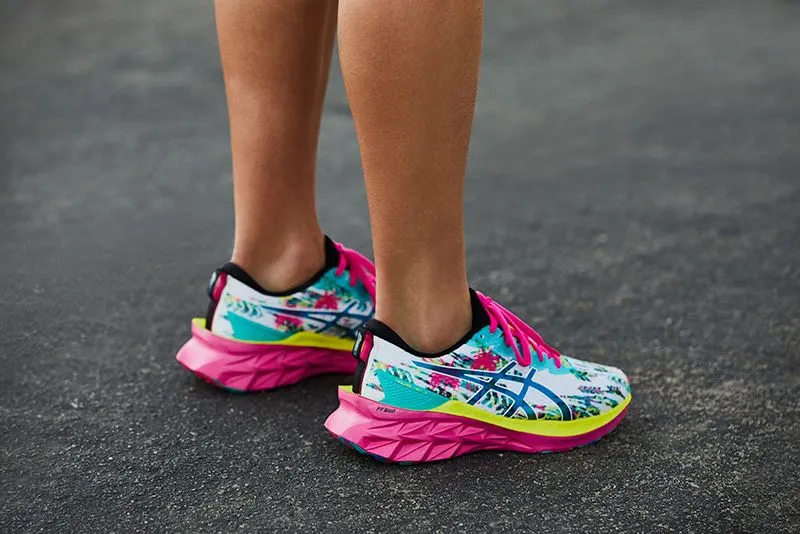
Running Shoes Guide - Choose the Right Shoe
September 24, 2021
Learn how to select the best running shoes for your running style and pronation type with our official ASICS running shoes guide.
Need help finding your perfect shoe?
Let's find the shoes made for you in four easy steps.
A comfortable running shoe is a shoe that fits, supports your running gait and is well suited to the type of running you do (long-distance, trail, speed etc.), but finding one is not always easy. Using the ASICS Shoe Finder is a great starting point, but it’s also worth understanding the different factors that you should take into account.
1. Intended use
Will you be road running, running on a purpose-built track or perhaps on a forest trail? All of these surfaces require a different kind of shoe. Another important distinction is the difference between everyday running shoes and race day running shoes. While everyday running shoes should provide comfort and support, a lightweight running shoe that provides a little extra forward propulsion and bounce might be a better choice for race day.
2. Pronation type
Pronation is the term used to describe the way your foot rolls when you walk and run. You should always know your pronation type before you consider buying running shoes as every shoe on the market is suitable for a specific pronation type.
You can find out what your pronation type is by getting an expert gait analysis done for you – many specialist running stores will offer this service, including ASICS stores. You can also learn more about pronation by reading our guide or find your local store using our ASICS store finder .

3. Length of the shoe
Keep an open mind with your shoe size and remember the following: the further you run, the more room you’re likely to need. That’s because your feet naturally expand as you run, so if you run long distances, you may need slightly bigger shoes.
We’re often asked how running shoes should fit in the toe box. A properly fitting running shoe will feel snug in the heel and the midfoot with some wiggle room around the toes. As a rough guide, you should have between half and a full thumb’s width of space between your toes and the end of the shoe.
4. Width of the shoe
The width of your shoe is just as important as the length when it comes to a good fit. People are not always in perfect proportions and often have wider or narrower feet than the 'norm'. Shoes that are too narrow can cause serious problems with your feet, while shoes that are too wide will allow too much foot movement and increase the risk of injury.
How snug should running shoes fit? Ideally, your foot should be able to move from side-to-side in the forefoot without crossing over the edge of the insole. If the shoe is too narrow, you’ll be able to feel the base of your little toe sitting on the edge of the shoe last (mould). When trying on the shoe, try to pinch a quarter of an inch of upper material at the widest part of your foot. If you can’t, then the shoe is too narrow.
5. Weight
Weight refers to two things:
- The weight of the runner - If you are a heavy or bigger built runner then you may need a shoe with more support.
- The weight of the shoe – Generally speaking, more supportive running shoes tend to be heavier, while neutral/race day shoes are more lightweight.
6. Socks
When buying running shoes, ideally you should try them on in the evening when your foot is slightly bigger and always try them on with proper running socks. ASICS has a wide range of running socks , all of which are specifically designed for running and will vastly improve the feeling of comfort and support inside the shoe.

How to tell if your running shoes fit
If your running shoes fit , you will be able to run mile after mile without experiencing any blisters, bruising or discomfort. Here are some of the issues you may experience if your running shoes don’t fit properly:
- Tingling or numbness in the toes - This usually indicates that your shoes are either too short or too narrow. Shoes that are either too short or too narrow can cause serious problems and should really be replaced.
- Blisters between your toes - Blisters between or on top of your toes are a sure sign that your shoes are too narrow and your toes are cramped.
- Blisters on the ball of your foot - This occurs when your shoes are too wide and your feet are moving around in your shoes more than they should.
- Bruised toes - Your running shoes are not long enough and your toes are being squashed.


